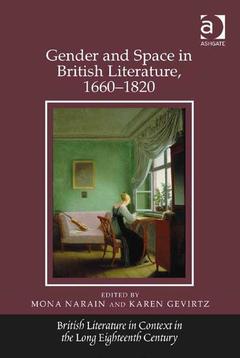Gender and Space in British Literature, 1660-1820 British Literature in Context in the Long Eighteenth Century Series
Auteurs : Narain Mona, Gevirtz Karen

Date de parution : 02-2014
15.6x23.4 cm
Date de parution : 08-2016
15.6x23.4 cm
Thème de Gender and Space in British Literature, 1660-1820 :
Mots-clés :
charlotte; smith; mary; davys; torrid; zones; long; eighteenth; century; Young Men; mowbray; Mowbray Castle; Aphra Behn’s Love Letters; Georgian Geographies; English Public’s Imagination; Duchess Mazarin; Turkish Embassy Letters; Elegiac Sonnets; Atlantic Enlightenment; Eighteenth Century Jamaica; Aphra Behn’s Oroonoko; Alchemical Practice; Mary Davys; Masculine Sublime; Feminine Reputation; Anne Finch; Montagu’s Turkish Embassy Letters; Bosom Friend; Creolized Space; Compendious System; Tom Telescope; Feminine Landscapes; Le Tonnelier De Breteuil; Natural World



